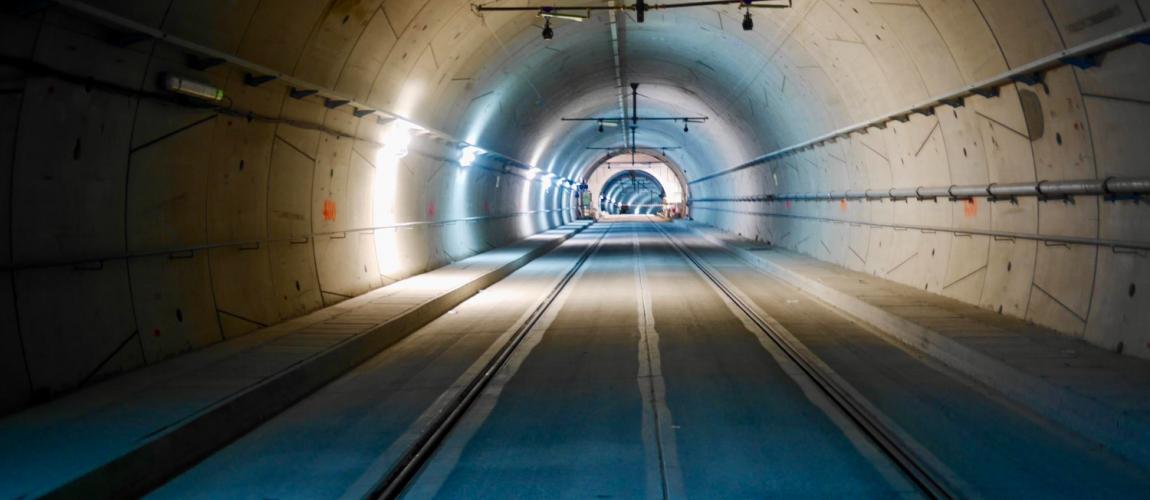Utility Tunnel in GIFT City, India

Photo Credit: Image by Freepik
On this page: Infrastructure sharing of physical assets between different utility providers can maximize the utility of infrastructure and/or minimize costs needed to build and operate assets. Find case studies below, or visit the Guidelines on Innovative Revenues for Infrastructure section and the Content Outline, or Download the Full Report.
Project Summary: Background Public utilities are normally located in the ‘public commons’ of the urban landscape, namely above or under roads and pavements. As the density of urbanized communities increase, the maintenance, renewal and upgrade of utility infrastructure in public commons real-estate has become progressively more complex and expensive. Infrastructure sharing of physical assets between different utility providers can maximize the utility of infrastructure and/or minimize costs needed to build and operate assets, creating a win-win situation for parties involved especially cost-savings from reduction in capital investment required for expanding, maintaining, and upgrading network connectivity. Several countries have developed utility corridors/utility tunnels that are typically used by different utility providers to lay their physical assets there, for example, cables for providing basic facilities such as power, and telecoms connectivity. In addition, pipelines for water supply, town gas supply, district cooling water, wastewater collection and even pneumatic solid waste management systems can also be laid in the same tunnel. Project Structure Gujarat International Finance Tec-City (GIFT City) is an integrated development on 886 acres of land with 62 million sq ft of built-up area envisioned as an emerging financial hub in Gujarat, India. GIFT City features office spaces, residential apartments, schools, hospitals, hotels, clubs, retail and various recreational activities. As well as a multi-service special economic zone.1 A Utility Tunnel was developed across the city to accommodate all utilities including power cables, raw water supply line to the water treatment plant (WTP) and treated water supply from the WTP to various developments, district cooling pipes, ICT cables, automated waste collection pipe, and fire hydrant water pipes, among others.2 The Utility Tunnel at GIFT City will approximately be 16 kilometers long, 8 meters wide and 11 meters deep. The provisions are made in the tunnel for smooth access, separation of utilities, proper drainage, lighting, and maintenance and security avoiding the need to excavate the roads for future repair, maintenance, renovation and upgrades of any utility.3 GIFT Utility Tunnel 4 Key players for delivering improved services Gujarat International Finance Tec-City Company Limited (GIFTCL) was incorporated in 2007 as a joint venture between Gujarat Urban Development Company Limited (GUDCL) and Infrastructure Leasing and Financial Services Ltd. (IL&FS).5 GUDCL facilitates urban development by assisting state government in formulation of policy, institutional capacity building, project implementation, and in raising funds from multilateral agencies for urban projects.6 Mechanism/s for Maximizing Funding for Infrastructure For utility providers, Multi-utility corridors & tunnels enable the offset of initial capital outlay required in laying utilities and also then paying, via leasing fees, for only a share of the cost of creating the multi-utility corridors & tunnels. For the master developer, Multi-utility corridors & tunnels create cleaner and smarter real-estate with higher utility reliability that are more appealing to blue-chip anchor locators. For Financiers of multi-utility corridors & tunnels, there is a stable long-term revenue from the long-term leasing to utility providers that are normally rated as low risk. For municipal governments, as the ultimate asset owner of multi-utility corridors & tunnels create a way of monetizing the public commons to create a stable own-source revenue. GUDCL appoints an EPC that can conduct works related to the utility tunnel through public tenders. Tender announcements are accessible in their e-procurement system. The cost of the tunnel is estimated at INR 3.15 billion.7 GUDCL issued separate tenders for different components. For example, GIFTCL launched the tender access control system for the utility tunnel was launched in 2021 with a contract value of INR 9,66,000.8 The initial cost of a utility tunnel can be recovered within at least four years. Typical Business Model Lesson Learned Implementation Footnote 1: Guarat International Finance Tec-City Footnote 2: https://www.giftgujarat.in/utility-tunnel Footnote 4: https://www.giftgujarat.in/utility-tunnel Footnote 5: Gujarat International Finance Tec-City (GIFT) Footnote 6: https://www.giftgujarat.in/promoters Footnote 7: https://www.bentley.com/en/project-profiles/gujarat-international-finance-tec-city_integration-of-urban-infrastructure-through-utility-tunnel Footnote 8: Implementation of Access Control System for Utility Tunnel Phase-2 in Gift City (Dta and Sez Area) Footnote 9: Sustainable utility placement via Multi-Utility Tunnels

(a)
Land lease or Joint venture agreement between the master developer and the developer
(b)
Concession agreement between master developer and utility providers for provision of utility services and lease of utility tunnel
Government
Landowner
Master Developer (GIFTCL)
Responsible for overall development including provision of infrastructure services that increase attractiveness
Developers
Through a land lease agreement develop certain components of the integrated development
Utility Providers
Provides utility services in the integrated development and rents the utility tunnel
The Guidelines on Innovative Revenues for Infrastructure (IRI) is intended to be a living document and will be reviewed at regular intervals. They have not been prepared with any specific transaction in mind and are meant to serve only as general guidance. It is therefore critical that the Guidelines be reviewed and adapted for specific transactions.
To find more, visit the Innovative Revenues for Infrastructure section and the Content Outline, or Download the Full Report. For feedback on the content of this section of the website or suggestions for links or materials that could be included, please contact the PPPLRC at ppp@worldbank.org.
Updated: February 26, 2024
TABLE OF CONTENTS
I. Innovative Revenues for Infrastructure (IRI)
2. Introduction to Commercial Value Capture (CVC)
3. Applying CVC in Infrastructure Projects
2. Case Studies in CVC from International Experiences
• Advertising and Marketing in High-Footfall Public Areas
• Naming Rights in Stations and City Icons
• Commercial Uses of Virtual Spaces
• Commercial Uses of Physical Places and Virtual Spaces Created on the Back of Public Infrastructure
• Control of Real Estate Development Rights to Enhance Value
• Leveraging Climate Opportunities
• Usage of Facilities During Off-Hours or Off-Seasons
• Repurposing or Adaptive Reusing of Old Assets